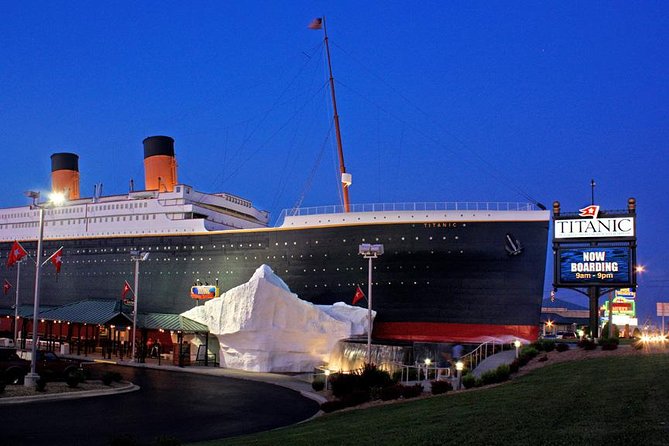
Branson, Missouri has become a destination for many people in the last several decades and we wanted to check it out. When we first arrived, all the signage for the attractions and concert venues struck us as very touristy and a little bit like Vegas (minus the casinos 😊). Unfortunately, there were no “big” names preforming when we were there and just lots of “tributes” to various bands and performers, which was disappointing. However, we did want to check out some attractions and the Titanic Museum was on the top of the list. (They did not allow photography inside the museum, so those photos come from their website.)
One of the first attractions that is hard to miss in Branson, is the Titanic Museum, which is done in the shape of the ship and even has an “iceberg” along the side. This attraction was certainly on our list of must-sees, and it did not disappoint. I did wonder why there was a Titanic Museum in Branson, which is landlocked. According to their website, “The Branson Titanic Museum is one of two Titanic-themed museums owned by John Joslyn, who was part of a 1987 undersea expedition to explore the ship’s remains. While the ship-shaped museum seems huge, the exterior is built to half-scale of the actual Titanic.” Due to the pandemic, we purchased our tickets online and received our “boarding time.” As we were “boarding” we were each handed a card with a person’s name, his / her biography, and if the person was a first-, second-, or third-class passenger. We were instructed to keep our eyes open as we toured the museum to find out the fate of our characters. Frank’s card was for the ship’s barber, who was a part of the crew. My card indicated I was a first-class passenger – a lady of means. I was pretty sure “my” character would survive but was a little worried about Frank’s character.
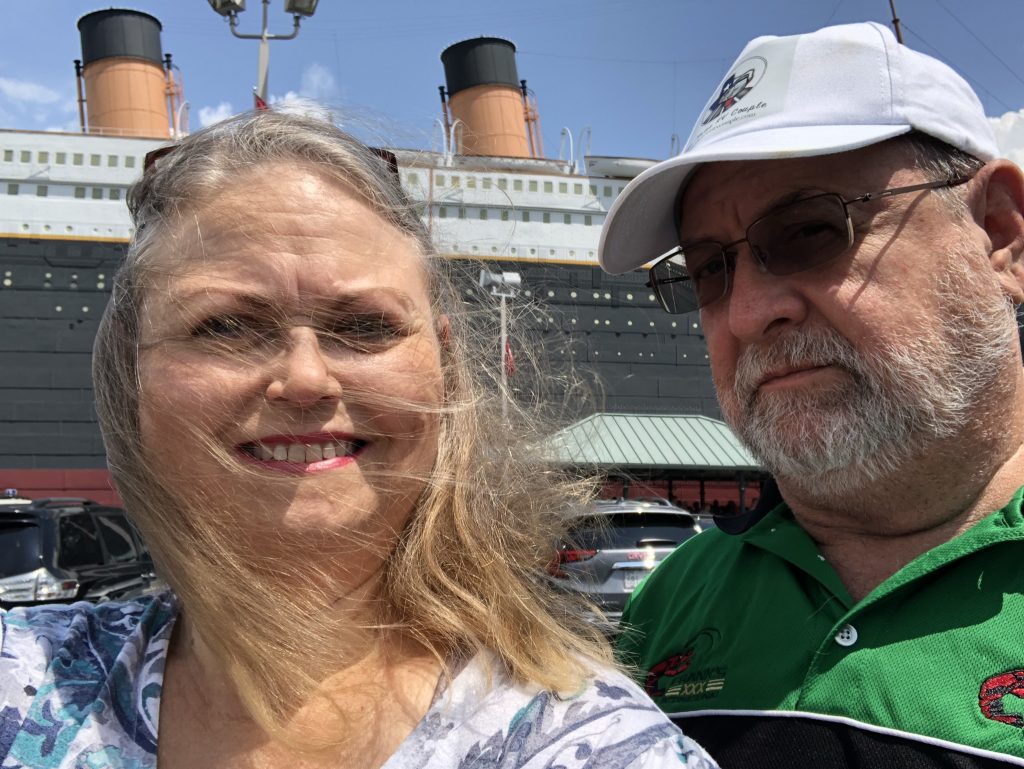
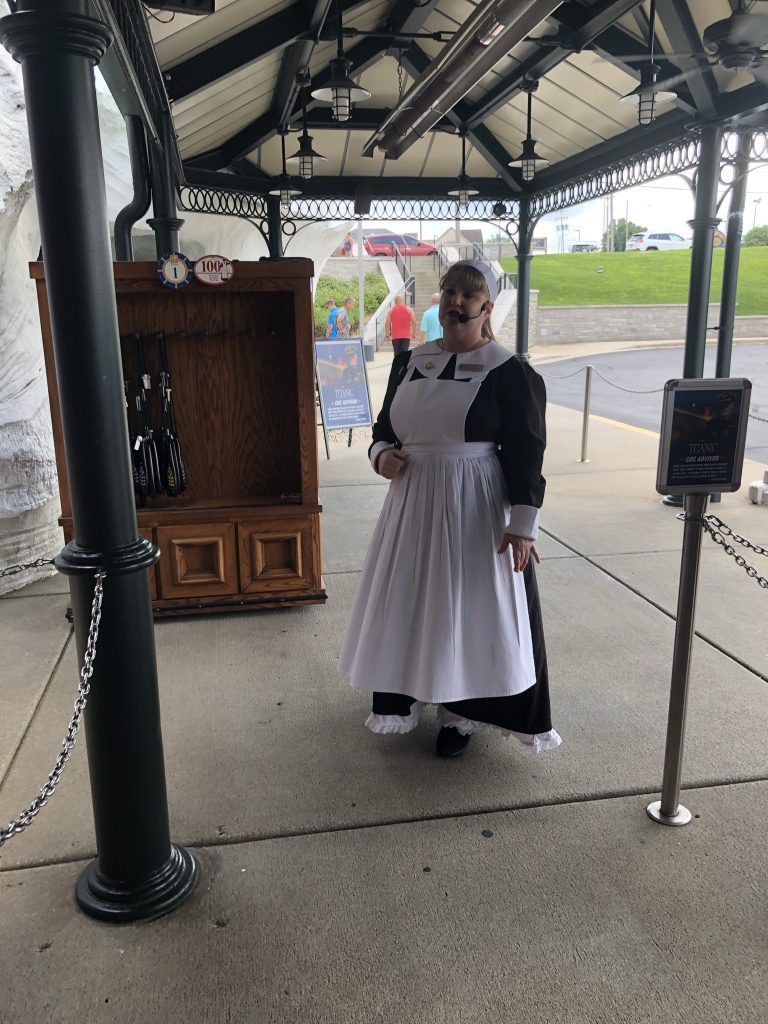
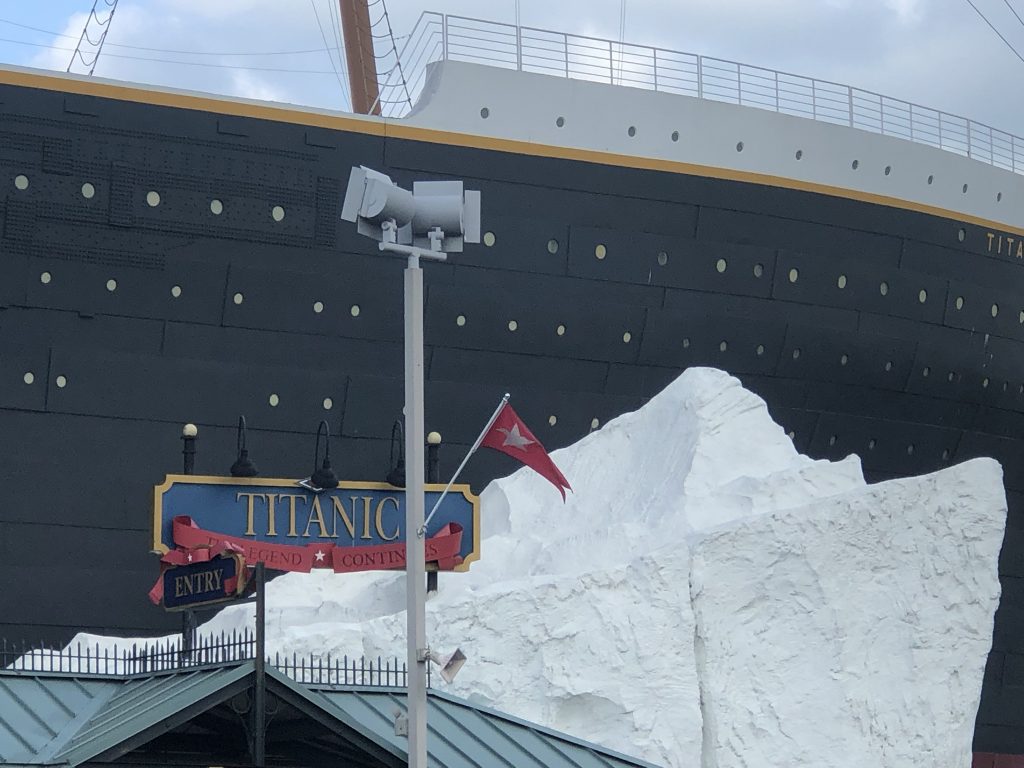
We were also given audio “wands” and told that whenever we encountered a number along the way, we were to key the number into the wand to hear more information about what we were seeing. Youth and children had different numbers for their audio tour at times. I thought that was a neat idea to have special audio aspects for them to keep them interested.
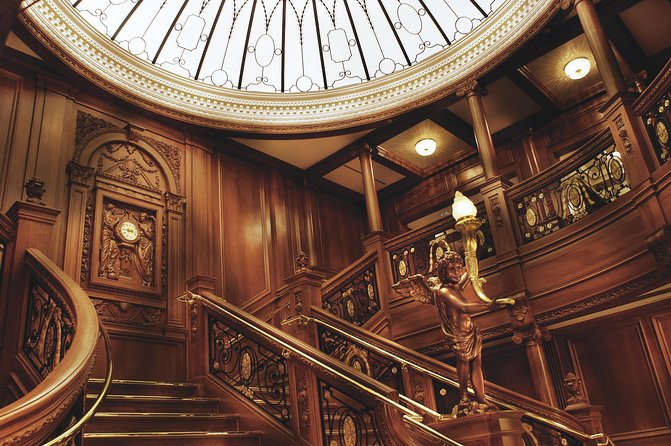


Seeing the grand staircase was impressive but what I found eye-opening was the floor in the area before the grand staircase was the most expensive material at the time. No, it wasn’t marble or granite or any kind of stone. It was linoleum square tiles. What? Yes, the linoleum tiles that everyone had in their homes, schools, and stores at one time and are now considered so cheap that no one wants them, was the most expensive flooring material at the time the Titanic was built in 1911 and 1912. Go figure.

Personal effects of passengers and passengers’ biographies where interesting. There was an entire room devoted to the musicians and we learned there was more than one band on board, so when “the band played on”, they aren’t exactly sure which musicians those were. There was an area for various crew members and there we found Frank’s character – Gus, the barber. I was relieved to learn he would survive the voyage and continue his career as a ship’s barber. Whew!
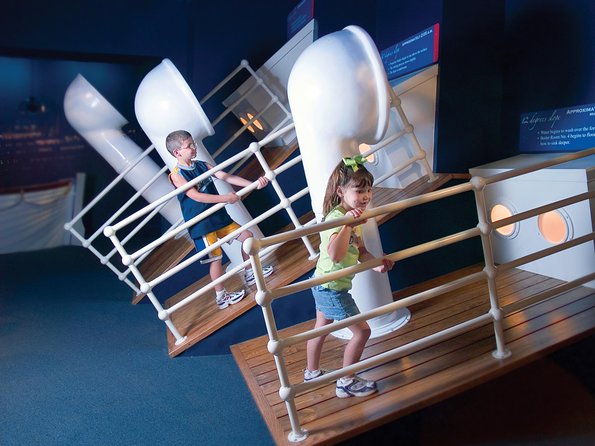
In one part they show angled “decks” to show what the pitch of the deck would be like at various times as the ship went down. Some kids loved trying those out, but I really had to hold on to the rails to try to even take a step or two up the inclines and that was with rails on both sides that I could reach. Imagine with only one rail or if I had no access to the rails at all. I believe I would have been sliding back and into the water as the ship went down.

The museum picks a different group each year to focus on for special exhibits and this year they featured the Jewish passengers and crew. There was even a kosher kitchen and chef on board. An odd little connection is that Anne Frank’s father – Otto Frank – had gone to college in Heidelberg with Nathan Straus Jr. (whose friends called him “Charley”), the son of the founder of Macy’s department stores. (Straus’ parents famously went down with the Titanic when his mother refused to leave his father behind.) They became good friends and remained in contact. Otto Frank enlisted Straus’ help in trying to leave Europe for America, but the destruction of the American Embassy in the Netherlands and the U.S. entering the war thwarted those efforts.
As I had assumed, my character did make it off the ship and survived. We spent about two hours going through the Titanic Museum and we recommend it. Be sure to wear comfortable shoes because you will be standing and strolling the entire time. While it did have audio wands and some exhibits that would appeal to children, I would not take young children or any child that wasn’t really fascinated by the Titanic. My grandson, who is 10 is fascinated by the Titanic, so I would have taken him. Be sure to check out the Titanic Museum in Branson!
Until next time,
Beth
Come Explore with Us!

